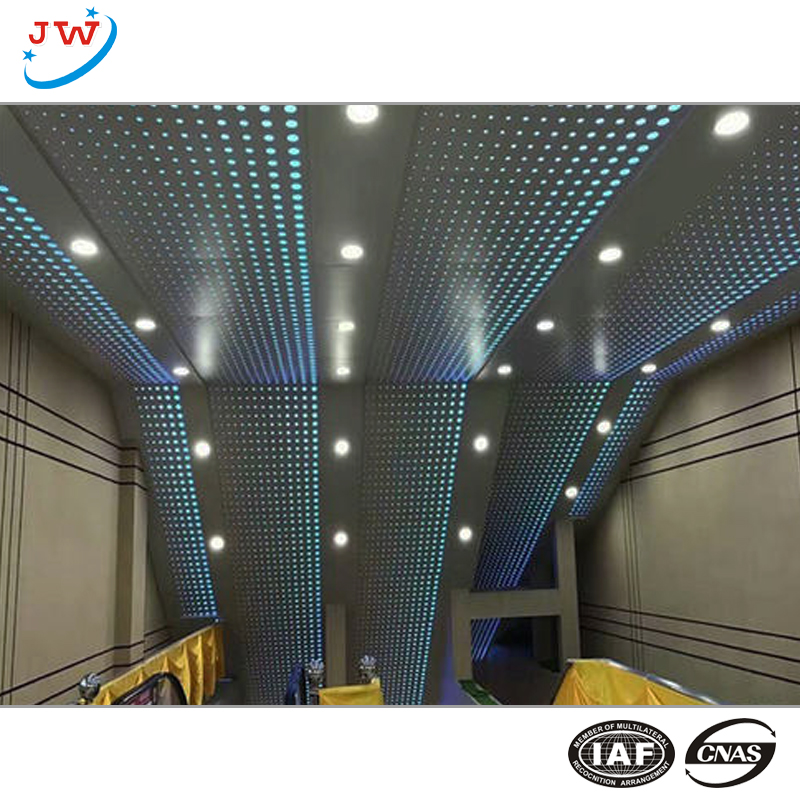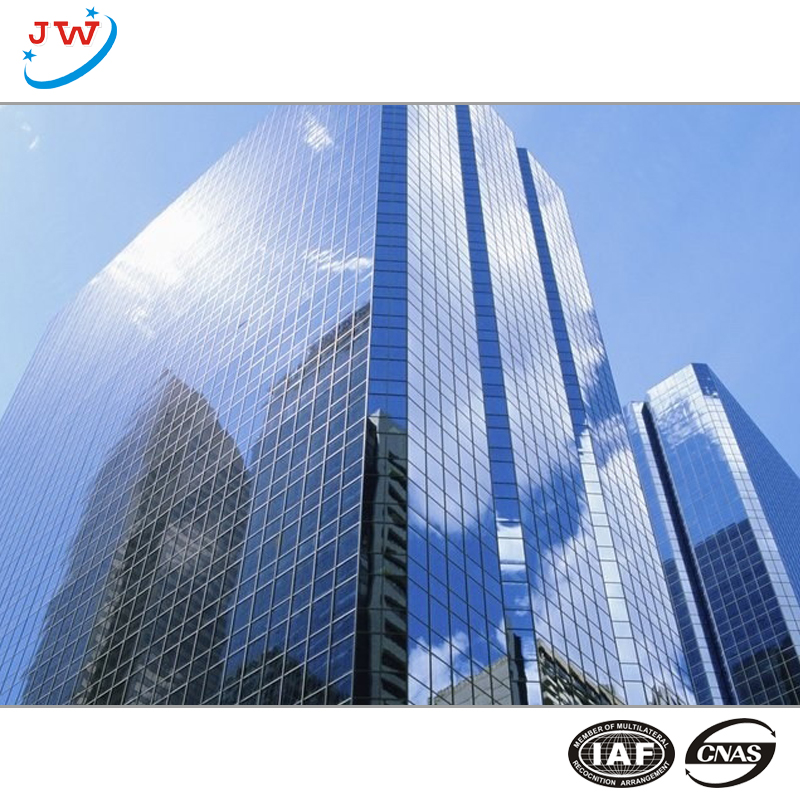Glass curtain wall is widely used in modern buildings, especially in some high-rise buildings. There are many kinds of glass curtain wall. With the development of the times and technology, in addition to the traditional glass curtain wall, more new types of glass curtain wall are also available. So, what are the types of new type glass curtain wall?. Let's take a look.
Curtain wall self-cleaning glass
It is difficult to clean the curtain wall, especially the glass, which is not easy to keep clean and transparent. At present, it has begun to apply a special coating on the glass to achieve the function of self-cleaning. The particle size of these coating materials is up to the level of nanometer (1m=10), so their surface properties have changed greatly. So it is also called nanomaterial glass, or nanoglass.
Automatic change of curtain wall glass
Curtain wall glass and window glass made of sol can automatically change from transparent to translucent or opaque with the change of temperature. Sol is a mixture of oil-containing polymer and water, which is colloidal semi-fluid. The change is so sensitive that when the temperature is low, the oil in the sol freezes the water molecules into a shell and guards them around the noodle-like polymer, when the sol is transparent and can pass through 90% of the sunlight. When the temperature is high, the frozen water molecules are melted and the fibrin fibers are rolled and twisted into a mess like noodles in boiling water. At this time, the sol changes from a clear and transparent state to an opaque white, blocking 90% of the sunlight. The window glass with automatic dimming is made of sol sandwiched between two layers of glass, which has the function of automatic dimming and adjusting indoor temperature. Singapore has developed a "smart glass window" that can remove heat, which can reduce cooling costs in summer. "the smart glass window is a multi-layer polarization window, adding two thin layers of tungsten oxide and vanadium oxide electrolyte between the two layers of glass, as well as an ordinary battery wire connected to the window. When the battery is electrified, the chemical composition of the glass produces electrical pulses, which make the glass change color with the intensity of sunlight. When the sun is strong, the glass is blue, 95% of the sunlight is reflected; when the sun is weak, the glass is colorless and becomes transparent, and all light can enter the room.
Discoloration glass of curtain wall
Discoloration glass is a kind of glass that can change its color with the change of external conditions. it can be used to decorate curtain walls and a variety of special requirements of door and window glass. According to the different conditions and mechanism of glass discoloration, discoloration glass can be divided into photochromic glass and electrochromic glass.
1. Photochromic glass
Photochromic glass is made by adding silver halide to the raw materials of the glass or photosensitive compounds of aluminum and tungsten to the glass and organic interlayers. When the external light shines on the surface of the glass, the tiny crystals of silver halide are separated from the glass to produce pigments. with the increase of the intensity of light, the precipitates of silver halide crystals increase, and the color of the glass deepens. When the light stops illuminating, the silver halide is restored and the glass gradually returns to its original color. When photochromic glass is illuminated by the sun or other light, the color gradually darkens with the increase of light, generally milky white when the temperature increases (such as in sunlight): when the temperature decreases, it is transparent again, the accuracy of discoloration temperature can reach ±1 ℃: when the irradiation stops, it returns to the original color. The application of photochromic glass starts from glasses, and then develops to the fields of transportation, medicine, photography, communication and architecture.
2. Electrochromic glass
Electrochromic glass is a kind of glass in which the transmittance and reflectivity of glass can change reversibly under the action of electric field or current. The "double beam theory" of electrochromic mechanism holds that discoloration is caused by the injection or extraction of ions and electrons in the material. This kind of glass is composed of ordinary glass and several layers of thin film materials deposited on the glass surface, some of which are used as electrode films to provide or store the ions needed for glass discoloration, and some thin films are used as ion conductor layers to conduct ions in the discoloration process. Under the action of external electric field, the ions in the electrochromic layer are implanted or filtered out, so that the discoloration glass can be bleached and colored. Discoloration glass can automatically control the solar radiation energy entering the room, so as to reduce energy consumption, improve indoor natural lighting conditions, and has the function of anti-peeping and anti-glare. It can be used for doors and windows and partition glass of high-grade office buildings, villas, hotels and other buildings.
Electrothermal glass of curtain wall
The electric glass is made by hot pressing two pieces of cast glass, and a very fine electric wire is laid between the two pieces of glass, which is almost invisible to the naked eye and absorbs 1% or 5% of the light. When used in curtain wall engineering, water condensation, water vapor and ice flowers will not occur on the glass surface, which can reduce the loss and heating cost.
These glasses are used on the windshields of many high-end cars, which will not dew in the cold winter to avoid operation errors caused by affecting the driver's line of sight, resulting in efficient safety accidents. .
The above is the introduction of the new glass curtain wall. if you want to know more about the glass curtain wall, please feel free to contact us.
Learn more about JINGWAN products
Post time: Mar-01-2022


